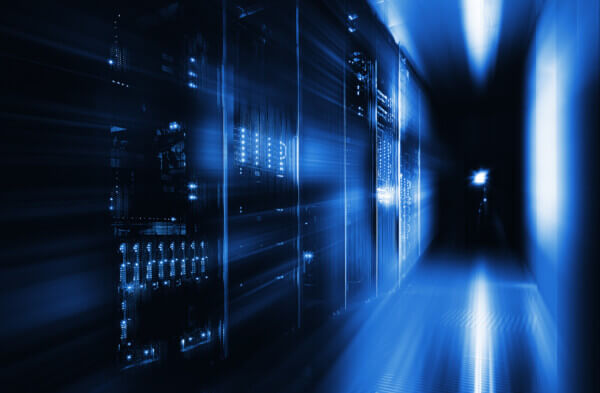Unlocking AI Potential with HPC: The Role of GPUs in Training Models
- AI training demands extreme computing power – Large models require high-speed processing to handle vast datasets and complex calculations.
- GPUs outperform CPUs for AI workloads – Parallel processing, high memory bandwidth, and energy efficiency make GPUs essential for deep learning.
- HPC infrastructure accelerates AI development – Scalable, high-performance computing reduces training times and optimizes resource use.
- Future AI breakthroughs depend on HPC and GPUs – Businesses leveraging advanced infrastructure today will lead in the AI-driven future.
Artificial intelligence (AI) is advancing at an unprecedented pace, with models growing larger, more complex, and more computationally demanding. From natural language processing to computer vision, AI training requires immense processing power to handle vast datasets and iterative learning cycles.
This is where high-performance computing (HPC) and AI intersect. HPC provides the infrastructure needed to process billions of calculations per second, ensuring that AI models train efficiently and at scale. At the heart of this revolution lies the GPU for AI models—the key to accelerating deep learning and unlocking AI’s full potential.
Why AI Model Training Requires High-Performance Computing
Training an AI model isn’t just about feeding it data—it’s about enabling it to recognize patterns, make predictions, and refine its accuracy through continuous iterations. This process involves massive parallel computations, making traditional CPUs insufficient for large-scale AI workloads.
Challenges in AI training include:
- Computational bottlenecks – As AI models grow in complexity, they require exponentially more processing power. Cutting-edge architectures like large language models (LLMs) process billions—or even trillions—of parameters, demanding hardware capable of handling extensive matrix operations simultaneously. Without sufficient computational resources, training slows, delaying AI development and deployment.
- Time constraints – Training deep learning models on CPUs can take weeks or even months. Most CPUs are optimized for sequential processing, making them inefficient for the massive parallel computations required in AI training. A task that could take weeks on a CPU-based system might take only a few days or hours using GPUs in an HPC environment. Faster training cycles allow businesses to iterate on AI models more rapidly, refining performance and deploying improvements at a competitive pace.
- Scalability issues – AI workloads demand dynamic resource allocation, which traditional data centers often struggle to provide. A single AI model’s resource needs can fluctuate dramatically—one moment requiring high-density GPU clusters and the next consuming minimal computational power. Traditional infrastructure often lacks the elasticity to scale efficiently, leading to wasted resources or processing bottlenecks.
HPC infrastructure solves these challenges by delivering the raw power, speed, and scalability needed to train models faster and more efficiently.
How GPUs Power AI Training at Scale
GPUs have transformed AI model training. Unlike most traditional CPUs, which process tasks sequentially, GPUs are designed for parallel computation, allowing them to handle thousands of simultaneous calculations. This makes them the ideal choice for deep learning, where neural networks require massive matrix multiplications and data transformations.
The key benefits of GPUs in AI training include:
- Faster processing speeds – GPUs accelerate training by breaking down computations into smaller tasks executed in parallel.
- Optimized memory bandwidth – AI models rely on high-speed data transfers, and GPUs offer significantly higher bandwidth than CPUs.
- Energy efficiency – Modern GPUs deliver more computations per watt, making them more efficient for large-scale training.
With AI workloads demanding ever-increasing computational power, leveraging HPC with GPU acceleration is essential for staying competitive.
The Future of AI Training: Powered by HPC and GPUs
The AI revolution is just beginning, and the ability to train larger, more sophisticated models will define the next era of technological breakthroughs. Whether developing autonomous systems, advanced language models, or cutting-edge scientific simulations, leveraging high-performance computing for AI is essential.
By harnessing the power of GPUs within an optimized HPC framework, businesses can unlock new possibilities, accelerate innovation, and stay ahead in an increasingly AI-driven world.
How Core Scientific Helps Businesses Achieve AI Acceleration
Core Scientific provides enterprises with the infrastructure, expertise, and high-performance GPU hosting services required for large-scale AI model training. With purpose-built HPC environments optimized for AI, Core Scientific helps businesses train models faster, more efficiently, and at scale.
Core Scientific’s solutions include:
- Infrastructure purpose-built for high-density GPU clusters – Designed specifically for AI workloads, these clusters maximize efficiency with parallel processing and high-bandwidth memory, reducing training times from weeks to days.
- Advanced cooling and power optimization – AI training generates significant heat, but Core Scientific’s infrastructure features advanced cooling and optimized power distribution to maintain peak performance while reducing energy costs.
- Scalable colocation solutions – Enterprises can scale computing power without the burden of managing their own data centers, thanks to secure, energy-efficient colocation services optimized for AI training.
By combining technical expertise with industry-leading infrastructure, Core Scientific empowers businesses to push the boundaries of AI model training, unlocking new capabilities in machine learning, natural language processing, and advanced analytics.
This blog post is for informational purposes only and does not constitute professional or investment advice. This content may change without notice and is not guaranteed to be complete, correct, or up to date. The views expressed are those of the author only and do not express the views of Core Scientific, Inc.



